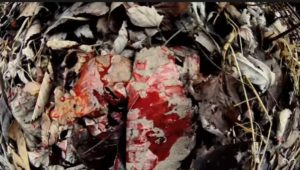 Are You Searching For The Best Tips on How to Track a Deer?
Are You Searching For The Best Tips on How to Track a Deer?
When hunting deer, you should keep in mind that one important part is the waiting game.
For example, you will spend lots of time in the trees, while waiting for deer to wander by.
However, having a good spotting scope will help to hasten the tracking. And if you don’t have one, at least get a decent binoculars.
However, for you to be successful in your hunting expedition, you need to know how to read deer tracks. When looking for deer or chasing a buck that you’ve already shot, reading its tracks is crucial. Read on to know 8 tracks of deer.
Use the 8 tested Tips to Track Deer and Get The Best Shot
1. Use a Good Binoculars And Either A Spotting Scope or Rifle Scope
Using the right rifle scope and equipment is extremely important when it comes to hunting deer. It will enable you to spot deer and make accurate shots.
Moreover, it will reduce instances of missed shots and unfortunate accidents while hunting. Remember that one missed shot will scare away the deer, meaning you’ll spend more hours scouting for them.
2. Deer Hoof Prints
When walking, deer will leave hoof prints behind, which are their most obvious tracks. You will spot them easily in snow, mud and softer ground. Hoof prints can help you know the direction that the deer are travelling or figuring out deer routine.
For instance, they can help you know the deer bedding, drinking and feeding spots. Moreover, hoof prints can help you determine the gender of the deer you’re hunting.
3. Droppings
Looking for deer dropping is another excellent way on how to track a deer. In addition, you should look at how fresh they are. Droppings can give you an idea of whether the deer you’re hunting is near or not.
You’ll save time by knowing whether it’s worth waiting. If the droppings are in large concentration, it indicates that you’re near their bedding area.
4. Trails
When camping or walking in the outdoors, we usually use the same routes. The result is that the paths become clear trails. The same case applies to deer using the same paths to their food and bedding grounds.
They will wear down the grass and ground, meaning you’ll easily know they are around. You can then determine whether to wait for them.
5. Scrapes
Scrapes are among the most obvious deer tracks. They are made when deer scratch the earth and paw at the ground near a tree. They then urinate on it to leave an obvious sign that they are around.
The males do this to attract the females during the rut season. If you smell a scrape, you should realize that deer are nearby.
6. Rubs
Using their antlers, bucks will rub on small shrubs and trees to exert authority and mark their territory. If you spot a rub, you should know it’s a sign that deer are around.
Depending on its freshness, you can know how long they have been around.
If the rub happens to be on the higher on the trees, you should know it’s the work of a mature and bigger buck. On the other hand, younger bucks will make their rubs closer to the ground.
7. Urine
Deer urine stains can help you track them during snow. In most instances, you will see them along with the deer hoof prints. You can use the urine stains to determine the deer gender.
For example, the urine of does will appear behind their tracks while that of the bucks will be behind their tracks.
8. Blood Trails
In the case that you manage to make an accurate shot on a buck, your most obvious hope is that it will drop down dead on the spot, meaning you’ll do no further tracking. However, if the buck springs away, you should know how to read its blood trail.
Remember to want to enjoy the venison on the table instead of some coyote having it as a meal. For that, we have included a video above to give you a better feel of the actual tracking.
Wrapping Up – How To Track A Deer
Tracking deer should be easy using the above tips and equipment. Reading blood trails from a shot deer is important if you want to track it.
If the blood is pink and frothy, it’s an indication that you managed a lung shot. If the blood is bright red, it’s an indication that you may have hit a wide range of areas.
The richer the blood you see, you should know you made a powerful and lethal shot.
